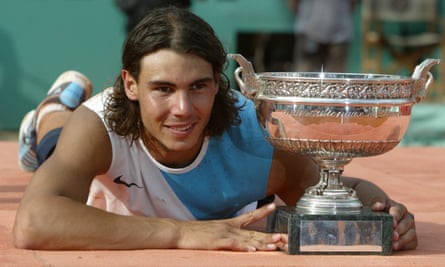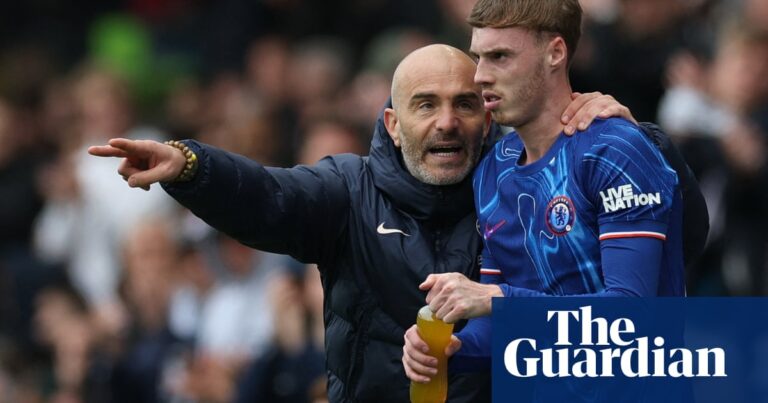In the days before the French Open began this year, Rafael Nadal’s outlook on his future seemed to have shifted. The first months of 2024 had been some of the toughest in his career as he tried to return to the court after a series of injuries had culminated in a significant hip surgery last year.
When, after an initial false start, he finally returned on the clay in Barcelona, Nadal repeatedly asserted that he was still struggling physically and his primary motivation for competing was simply to say goodbye to his home crowd. He lost in the second round.
By Roland Garros, though, just a few weeks later, that pessimism had given way to a striking amount of hope. Nadal finally felt as if he was capable of performing at a high level. After so many months away, he also seemed to be revelling in simply being a professional tennis player, from the daily training sessions to travelling with his family.
Asked to confirm whether this year would mark his final appearance at his French Open, Nadal drew laughter with his noncommittal response: “Let’s explore,” Nadal said, laughing. “I don’t want to create a big confusion, but I’m enjoying what I am doing. Sorry.”
Those hopeful moments turned out to be fleeting. A few days later the Spaniard succumbed to Alexander Zverev, a brutal first-round draw, losing in three tight sets. Nadal had spent months doing all he could to be ready for the French Open and Olympics, yet just days before the Olympics began at Roland Garros, Nadal suffered a thigh injury. He lost heavily in the second round to Novak Djokovic.
Even though Nadal insisted on taking his time and deliberating over his future before coming to a final decision, the outcome seemed obvious. At 38, after so many injuries and such high mileage, his body was clearly unable to handle the intensity of professional tennis for any sustained period of time and was screaming out for him to stop.
In recent years these injuries have also started to threaten his lifestyle away from the court, his ability to play with his son, to compete recreationally in the other sport he loves, golf, and simply just to walk without pain. Now is the time to fully enjoy the life that his success has built for himself.
In many ways this is not the ending that one of the greatest tennis players in history deserves. He has spent his final years in constant pain, rarely competing without some sort of limitation and unable to even raise himself for one last rousing singles performance. But like Andy Murray’s departure, instead of a fairytale he ends his career with something more authentic and true.
Despite all the injury struggles, Nadal’s motivation and passion for the sport never waned. He arrived on the tour with a reputation for giving his all on every single point until the bitter end and this is the lesson he leaves for generations to come. Nadal played until he could play no more and, as a result, he showcased his talents for more than 20 years.

Around 2002, as the US hegemony on the ATP Tour came to an end, the narrative from some quarters was that men’s tennis was in freefall as it became dominated by nameless European players unable to summon the charisma of the stars from yesteryear. Instead, Nadal’s rivalries with Roger Federer and Djokovic took tennis to new heights.
On the court Nadal has undeniably transformed the game. The violent, hefty spin with which he strikes the ball was revolutionary in itself. Nowadays, as string technology has continued to evolve, numerous players have been influenced by his playing style and they have even managed to replicate Nadal’s spin rate, but Nadal’s forehand remains completely dominant and unique.
after newsletter promotion
Meanwhile, Nadal is a far more nuanced figure than his reputation would suggest. Nadal is renowned for his passion, fire and fight, but no other player demonstrates so much self-control on the court. During his practice sessions Nadal could become irritable and frustrated when he failed to live up to his own perfectionistic standards, yet the moment he stepped into battle his mindset was transformed.
No matter how badly he was performing he remained calm, focusing on every single point with his highest intensity and refusing to allow his emotions to derail him. Nadal’s physicality and strength are two of his defining qualities, yet he is simultaneously one of the most cerebral players on the tour, always searching for solutions and adjusting his tactics in search of victory. Although Nadal’s talents were overwhelming from the beginning as he won Roland Garros on his tournament debut in 2005, his career has also been defined by his determination to constantly improve in all areas.
After losing consecutive Wimbledon finals to Federer, Nadal had to retool his game in order to topple the Swiss in the 2008 Wimbledon final, one of the greatest sporting spectacles of all time, and finally achieve his dream of winning at the All England Club. While his speed began to wane with age, his mastery of the net has played a significant role in late-career success.
As Nadal suffered from countless injuries during his youth, the widespread belief was that his game was too physical for his body and he would burn out early. He has repeatedly noted that such opinions were so prevalent that, at some point, he even started to believe his career would be short.
Instead he will finish his career after two decades of sustained greatness that have marked him as by far the greatest clay-court player and one of the very best tennis players of all time.
Source: theguardian.com


















